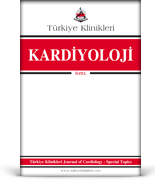Türkiye Klinikleri'nin Hipertansiyon (HT) kitabının yayına hazırlanması için editörler olarak, ben ve Prof. Dr. Ahmet Çelik elimizden geleni yapmaya çalıştık. Bu onurlu görevi bizden talep eden baş editör sayın Prof. Dr. Hikmet Akgül'e ve özverili çalışmaları için yazar arkadaşlara teşekkür ederim. Bu kitabımızda HT'nin tanım, patofizyoloji, tanı ve tedavisinde günümüzde geldiği noktayı göz önüne sermeye çalıştık. Gelişmelerin devam edeceği su götürmez bir gerçektir. Dolayısıyla, bir bölümü gelecek için bir perspektif oluşturmaya ayırdık. Diğer taraftan HT'nin; bir klinik antite olarak kabul edilmesi ve tedavi ilgili gelişmeler açısından heyecan verici bir geçmişi de vardır.
Tarihteki kilometre taşlarından kısaca bahsedecek olursak: M.Ö. 2600'de yazılmış olan Çin Sarı İmparatorun İç Hastalıkları Klasiğinde; 'Eğer kanda aşırı tuz kullanılmışsa nabız şiddetlenir' şeklinde bir not geçmektedir. Antik çağlarda 'şiddetli nabız hastalığının' tedavisinde akupunktur, flebetomi ve sülük yöntemlerinin kullanılmıştır. Palpe edilen nabız ile kalp ve beyin problemleri arasındaki ilişki ise antik Mısır hekimleri tarafından tanımlanmıştır (Ebers'in Papirüsü, MÖ 1550). Kan dolaşımının ilk tanımlanması 1628'de İngiliz hekim William Harvey tarafından yapılmıştır. İlk kez 1733'de İngiliz rahip Stephen Hales icat ettiği bir manometre ile bir atta arteriyel kan basıncını ölçmüştür. Bir İtalyan hekim Scipione Riva-Rocci'nin 1896'da manşet tabanlı sfigmomanometreyi icadından sonra HT bir klinik antite olarak kabul edilegelmiştir. 1905'de bir Rus Hekim olan Nikolai Korotkoff'un tanımladığı sesler, sistolik ve diyastolik kan basınçlarının tanımlanmasına ve kaydedilmesine büyük ölçüde yardımcı olmuştur.
Patofizyolojik olarak HT'nin bir intrinsik böbrek hastalığı olduğu düşünülürken, Fredrik Akbar Mahomed (1874), Clifford Allbutt (1896), Henri Huchard (1893) ve diğer bazı hekimler bu hastalığın bir böbrek bozukluğu olmadan da ortaya çıkabildiğini ve ateroskleroza öncülük edebildiğini göstermişlerdir. Esansiyel HT'nin isim babaları Mahomed ve Otto Frank'dır (1911). Esansiyel HT terimi kan basıncı yükselmesinin arteriollerin konstrüksiyonu neticesi ortaya çıkan doku iskemisinin üstesinden gelmek için kompansatuar bir reaksiyon olduğunu düşündürmüştür ve bu yanlış yorum o dönemde antihipertansif ilaç geliştirilmesi çabaları için cesaret kırıcı olmuştur.
Tedavi konusunda ayrıca şunlar söylenebilir: Sigorta şirketlerinin veri tabanları 1930'lardan itibaren HT ile kardiyovasküler ve renal hastalıklardan kaynaklanan mortalite arasında ilişkiyi göstermiş olmasına rağmen, tedavinin geniş bir şekilde pratiğe yansıması 1950'lerden sonra gerçekleşmiştir. Bu yıllarda HT konusuna halkın dikkatinin en fazla çekilmesine neden olan olay, ABD başkanı Franklin D. Roosevelt'in hastalığıdır. Kendisine 54 yaşında HT tanısı konulmasına rağmen o zamanki görüşlere uygun şekilde ilk 4 yıl herhangi bir tedavi verilmemiş, sonrasında ise fenobarbital ve masaj tedavisi reçete edilmiştir. Roosevelt 1945'de 63 yaşında vefat etmiştir. Framingham Kalp Çalışması (başlangıç: 1948) gibi longitüdinal epidemiyolojik çalışmalar HT'nin kardiyovasküler morbidite ve mortalite riski üzerine etkisini ve tedavinin gerekliliğini tam olarak ortaya koymuşlardır.
Prof. Dr. Mehmet Necdet AKKUŞ
Editör
As the editors, I and Prof. Dr. Ahmet Çelik tried together to do our bests to prepare the book of Turkiye Klinikleri entitled Hypertension (HT) for publication. I am grateful to the editor in chief Prof. Dr. Hikmet Akgül for inviting me this honourable task and also to the authors for their devoted efforts. In this book, we addressed the current knowledge in pathophysiology, diagnosis and treatment of HT. There is no doubt that the progress in this field will be going on. Hence, one section is engaged on the future perspectives in HT. On the other hand, especially in terms of its acceptance as a clinical entity and therapeutic approaches HT has an exciting history also.
A brief review of the milestones is as follows: The Chinese Yellow Emperor's Classic of Internal Medicine (2600 BC) noted: 'If too much salt is used in blood, the pulse hardens.' Treatment of 'hard pulse disease' during ancient times included acupuncture, venesection and bleeding by leeches. The relationship between the palpated pulse and the development of heart and brain afflictions was described by ancient Egyptian physicians in the Ebers Papyrus (1550 BC). The circulation of the blood was first described by an English physician William Harvey in 1628. It was in 1733 that English priest Stephen Hales invented a manometer and made the first published measurements of arterial blood pressure in the horse. The recognition of HT as a clinical entity came with the invention of the cuff-based sphygmomanometer by Italian physician Scipione Riva-Rocci in 1896. The saunds described by Russian physician Nikolai Korotkoff in 1905 has greatly helped to define systolic and diastolic blood pressure measurements and clinical recording of blood pressure.
Pathophysically, While HT had been attributed to intrinsic renal disease, subsequent observations by Fredrik Akbar Mahomed (1874), Clifford Allbutt (1896), Henri Huchard (1893), and others demonstrated that hypertension may occur without overt renal disease and may precede arteriosclerosis. Both Mahomed and Otto Frank (1911) have been credited for coining the term 'essential hypertension.' This term implied that the elevation of blood pressure was a compensatory reaction to overcome ischemia of the tissue caused by constricted arterioles and this misinterpretation discouraged early attempts to develop antihypertensive drugs.
The fallowing statements can be also added on therapeutic approaches: Despite actuarial data from insurance companies available from the 1930s demonstrating the relationship between hypertension and mortality from cardiovascular or renal disease, it was not until the 1950s that hypertension management became more widely practiced. In these years the most striking case that lead to an increase in people's attention to the impacts of untreated HT was US president Franklin D. Roosevelt's disease. Despite Roosevelt was diagnosed as suffering from HT at age 54, in line with the views at the time, did not receive treatment for the first 4 year and received phenobarbital and message therapy after. He was died at the age of 63 in 1945. Longitudinal, epidemiological studies like the Framingham Heart Study (begun in 1948) have precisely demonstrated the impact of HT on cardiovascular morbidity and mortality and necessity of treatment.
Prof. Dr. Mehmet Necdet AKKUŞ
Editor







.: Process List